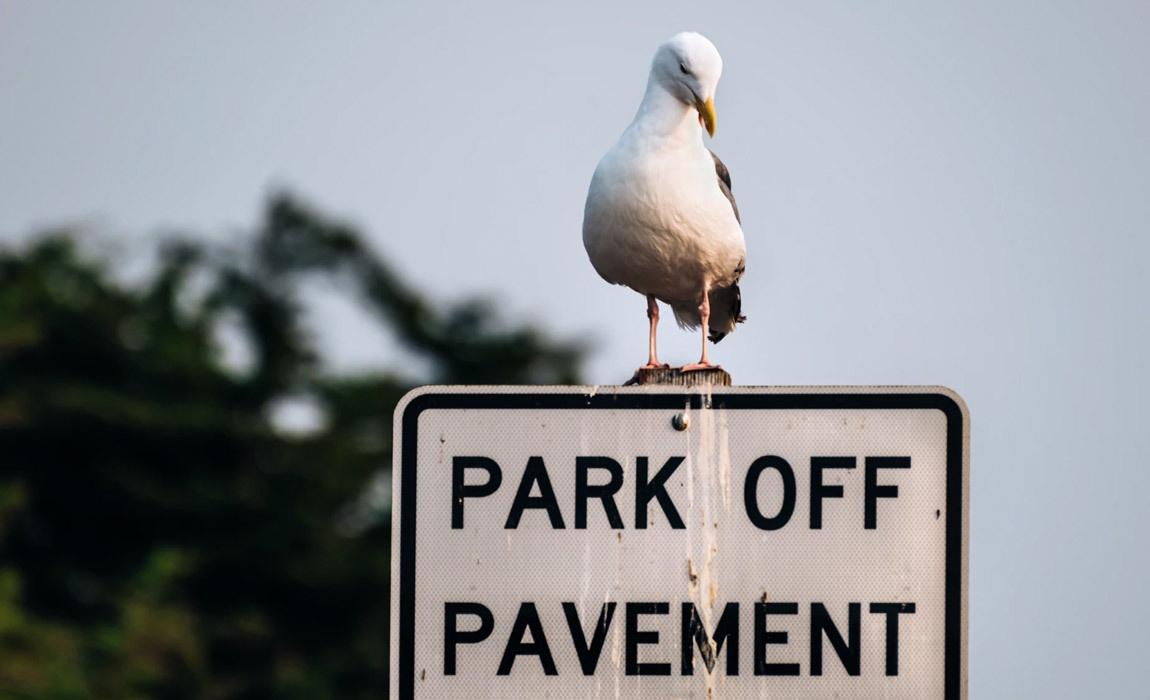You invest significantly in maintaining your vehicle through regular maintenance, insurance, and safety checks. But there's one threat many car owners overlook until it's too late - bird droppings.
Do You Own Your Home Or Rent?
Essential knowledge for keeping your vehicle's paint protected from natural threats and maintaining its value long-term.
- Bird droppings are highly acidic (pH 3-4.5) and can permanently etch paint within hours - especially dangerous when combined with heat and sunlight
- Insects, tree sap, and bird waste contain grit and minerals that scratch paint during removal - always soften first with warm water before cleaning
- Preventive protection like quality wax or ceramic coatings creates a barrier that makes cleanup easier - investment pays off in preserved paint and higher resale value
- Strategic parking and physical barriers (car covers, garage use) prevent 80% of damage - choose covered spots over convenience when possible
- Quick response time is critical - clean organic matter within 24-48 hours - heat and UV exposure accelerate permanent damage to clear coat
- Professional-grade products outperform household cleaners for stubborn deposits - having the right tools shows in the results
- Bird Poop Damages Car Paint More Than You Think
- How to Prevent Birds From Targeting Your Vehicle
- Best Protective Coatings to Shield Paint From Bird Droppings
- Safe Bird Poop Removal That Won't Damage Paint
- Creating a Bird Poop Protection System That Works
- Keep Your Car Looking Professional Despite Bird Encounters
As someone who gets loaner cars nearly every week from various manufacturers, it's an incredible honor to be a car reviewer, but nothing infuriates me more than having a bird fly by and poop right on the hood of an otherwise beautiful truck that was just delivered to me with a perfect polish. The same is true when I park under a tree and something drips down - not only is it frustrating, but it also looks terrible for photos. Sometimes, especially on matte paint, it can be really tough to clean up without potentially damaging the paint and finish.
This frustration inspired me to create this article with tips and advice I've learned from years as an auto blogger, talking with other guys who review cars as well as the detailers at fleet companies who have shared their techniques for keeping vehicles looking clean and new. According to automotive paint specialists, bird waste causes more permanent paint damage than most owners realize, potentially reducing your vehicle's resale value by hundreds of dollars. Taking proactive steps to protect your car demonstrates the same responsible ownership that makes you someone others turn to for advice.
Bird Poop Damages Car Paint More Than You Think
Bird droppings pose a more serious threat to your car's finish than most people understand. Professional detailers frequently cite bird droppings as one of the most common causes of paint correction work - especially in warm climates and summer months - though exact figures vary.
The Science Behind Bird Dropping Damage
Bird droppings contain uric acid with a pH level between 3.0 and 4.5 - acidic enough to begin etching your car's clear coat within hours, according to automotive paint chemists. Unlike mammals, birds lack separate digestive and urinary systems, meaning their waste combines concentrated acids with solid matter through an organ called the cloaca.
This chemical composition creates multiple damage mechanisms. The acid immediately begins breaking down paint polymers, while embedded grit from the bird's diet acts like sandpaper during removal attempts. Research from automotive coating manufacturers shows that damage can escalate rapidly when heat and UV exposure are added.
Heat and Weather Amplify the Damage
Direct sunlight intensifies the problem significantly. When bird droppings dry and bake onto your paint in temperatures above 80°F, the acid concentration increases and the waste adheres more aggressively to the surface. In direct sun and high temperatures, bird droppings can begin to permanently etch paint in as little as two hours - especially on darker vehicles.
Wind-blown debris and rain can make matters worse by grinding the dried waste into your paint like an abrasive compound. This is why quick action matters more than perfect technique.
How to Prevent Birds From Targeting Your Vehicle
The most effective approach combines multiple prevention strategies rather than relying on a single solution.
Smart Parking Strategies
Location choice makes the biggest difference in preventing bird-related damage. Avoid parking directly under trees, power lines, or near water sources where birds congregate. When possible, choose parking spots with overhead cover, even if it means walking an extra 50 yards.
According to wildlife management specialists, certain trees are more attractive to birds than others. Oak, maple, and fruit trees see higher bird activity than pine or evergreen species. Understanding these patterns helps you make better parking decisions.
Physical Barriers and Deterrents
Car Covers A quality car cover provides the most reliable protection when parking outdoors regularly. Modern covers made from breathable synthetic materials offer excellent protection without trapping moisture. While covers require a few extra minutes to deploy and remove, they protect against more than just bird droppings - UV damage, tree sap, and weather-related wear.
Bird Deterrent Systems For home protection, several deterrent options prove effective:
- Reflective tape or pinwheels create movement and light that discourage birds from landing
- Ultrasonic devices emit frequencies that birds find uncomfortable (effectiveness varies by species)
- Predator decoys like realistic owl or hawk replicas can work but require regular repositioning to maintain effectiveness
- Physical barriers such as netting over parking areas provide guaranteed protection
Professional pest control specialists recommend rotating different deterrent types every few weeks to prevent birds from becoming accustomed to static solutions.
Best Protective Coatings to Shield Paint From Bird Droppings
Quality protective coatings create a sacrificial barrier between contaminants and your paint, making cleanup significantly easier and reducing the risk of permanent damage.
Traditional Wax vs Modern Ceramic Coatings
| Protection Type | Durability | Application | Cost | Cleaning Ease |
|---|---|---|---|---|
| Carnauba Wax | 2-4 months | DIY-friendly | $20-50 | Good |
| Synthetic Wax | 4-6 months | DIY-friendly | $30-80 | Very Good |
| Paint Sealant | 6-12 months | Moderate skill | $50-150 | Excellent |
| Ceramic Coating | 2-5 years | Professional recommended | $500-1500 | Outstanding |
According to automotive coating manufacturers, properly applied protection reduces cleaning time by 60-80%. Ceramic coatings significantly reduce the risk of acid etching and make cleanup easier, especially when bird droppings are removed promptly.
For New Vehicles: Ceramic coatings offer the best long-term value, especially if you plan to keep the car for several years. The upfront investment pays dividends in easier maintenance and preserved resale value.
For Older Vehicles: Quality synthetic wax applied every 3-4 months provides excellent protection at a fraction of the cost. The key is consistency - maintaining a protective barrier year-round.
Safe Bird Poop Removal That Won't Damage Paint
When prevention fails, proper cleaning technique becomes critical. Many car owners inadvertently cause more damage during cleanup than the original bird dropping would have caused.
The Right Approach to Safe Removal
Immediate Response (Within 2 Hours):
- Rinse with cool water to remove loose material
- Apply warm soapy water and let it sit for 2-3 minutes to soften remaining deposits
- Gently wipe with a microfiber cloth using straight-line motions, never circular
- Rinse thoroughly and dry with a clean towel
For Dried or Baked-On Deposits:
Baking Soda Method: Mix 2 tablespoons of baking soda with warm water to create a paste. Apply to the affected area and let sit for 5 minutes before gently wiping away. The alkaline baking soda neutralizes acid while providing mild abrasive action.
Specialized Cleaning Products: Professional-grade cleaners like Chemical Guys Bird Bomb or Meguiar's Gold Class Bug & Tar Remover are formulated specifically for organic deposits. According to professional detailing experts, these products reduce damage risk compared to household alternatives.
Seltzer Water Technique: Seltzer water may help loosen light or recent deposits - especially on glass - but isn't effective on older, hardened droppings. Pour directly onto fresh deposits, wait 30 seconds, then gently wipe away.
When to Seek Professional Help
If droppings have etched through to the paint layer (visible as a dull spot that doesn't disappear when wet), professional paint correction becomes necessary. Professional detailers use specialized compounds and techniques to remove etching without damaging surrounding paint.
According to automotive refinishing specialists, catching etching early reduces correction costs by 70-80% compared to waiting until multiple layers are affected.
Creating a Bird Poop Protection System That Works
Smart car owners develop systems that prevent problems rather than constantly reacting to damage. Here's a practical approach that fits most budgets and schedules:
Monthly Tasks:
- Inspect paint for new deposits or damage
- Apply spray wax or detail spray for interim protection
- Check and clean deterrent devices
Quarterly Tasks:
- Apply fresh coat of quality wax or sealant
- Deep clean any problem areas
- Evaluate and adjust parking strategies
Annual Tasks:
- Professional inspection and paint correction if needed
- Consider upgrading protection level based on results
- Replace or upgrade deterrent systems
This systematic approach demonstrates the kind of proactive thinking that keeps vehicles looking their best while protecting long-term value. It's the difference between being reactive and being prepared - a mindset that others notice and respect.
Keep Your Car Looking Professional Despite Bird Encounters
Taking proper care of your vehicle's appearance isn't just about preserving resale value - it reflects your attention to detail and respect for the things you work hard to afford. When friends and family see your car looking consistently clean and well-maintained, they naturally assume you bring the same level of care to other aspects of your life.
Professional automotive specialists emphasize that prevention and quick response create a positive cycle. Once you establish good habits, maintaining a pristine vehicle becomes routine rather than a constant battle against damage. The confidence that comes from knowing you can handle whatever nature throws at your car translates into other areas where competence and preparation matter.
Bird droppings, insects, and tree sap will always be part of owning a vehicle. The difference lies in having the knowledge, tools, and systems in place to address these challenges effectively. With the right approach, protecting your car's paint becomes just another aspect of responsible ownership - one that pays dividends in both vehicle value and personal satisfaction.
Hey James Hills wants you to share this!

